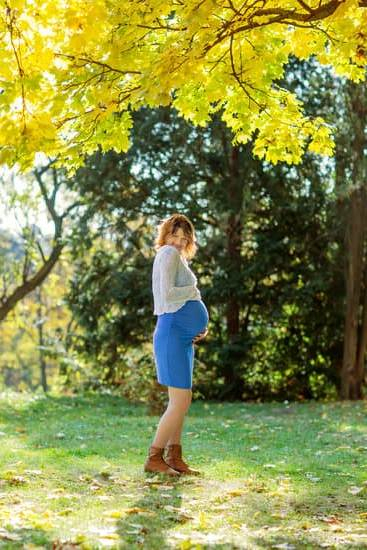Introduction
A chemical pregnancy, also known as a biochemical pregnancy, is an early pregnancy loss that occurs shortly after implantation. During this time the embryo stops growing and fails to produce a gestational sac which will contain the fetus. The body may still show signs of pregnancy such as a positive result on a pregnancy test. Generally, it can take several weeks to two or three months for the body to resume its normal menstrual cycle after a chemical pregnancy.
Answer: While the exact timeline varies from person to person, typically ovulation resumes at least 3-4 weeks after a chemical pregnancy occurs. This can be identified by tracking your basal body temperature (BBT) daily which should start dipping again when ovulation begins. There are also ovulation predictor kits (OPKs) which can detect increased levels of luteinizing hormone in your urine that indicate when you are about to ovulate. If you experience any vaginal bleeding following a chemical pregnancy it is important to have it checked out with your doctor as it could be an indication of an underlying medical condition. To ensure healthy fertility and reduce the risk of future miscarriages its important that you consult with your doctor both before and after experiencing a chemical pregnancy in order to get personalized recommendations that fit your individual health needs.
Understanding the Phases of a Chemical Pregnancy
A chemical pregnancy is an early stage miscarriage that occurs before the fifth week of gestation. It happens when signs and symptoms of a successful pregnancy are present, such as a positive pregnancy test, followed by vaginal spotting or bleeding. After experiencing a chemical pregnancy, it is normal for a woman to have questions about recovery times and ovulation cycles.
Typically, ovulation will occur 14 days after the start of the last menstrual period (LMP). For women who have experienced a chemical pregnancy, this cycle may be delayed due to hormones and stress as the body recovers from the trauma. Most doctors recommend waiting at least one full cycle before trying again so that their body can return to its natural rhythm; however, this varies depending on the individual. Once it’s been determined safe to try again, regular ovulatory cycle monitoring should be performed in order to maximize success rates. Monitoring can be done through basal body temperature tracking or home ovulation kits which track changes in LH levels during mid-cycle – both of which should be done throughout the supportive care process as fertility experts help create optimal conditions for conception. Additionally, some doctors also recommend reducing stress levels and increasing healthy habits like diet and exercise while trying to conceive again after a chemical pregnancy. Taking these steps can help reduce chance of similar issues occurring in future pregnancies.
Understanding the Effects of a Chemical Pregnancy on Your Body
Typically, women experience symptoms of a chemical pregnancy – such as spotting or missed periods – in the weeks following implantation. Following this, it is possible to ovulate as early as two weeks later, with the average being around 18 days post-implantation. However, for some women it may take longer depending on individual physiology and circumstances.
Once ovulation has occurred, resulting in an egg ready for fertilization, your body will produce higher amounts of progesterone — a hormone required for implantation and healthy fetal development. During chemical pregnancy cycles, abnormally high levels of progesterone may be present but not sustained because there is no embryo to cause and sustain the production over time. Therefore, it is important to take any hormone supplements prescribed by your doctor if needed.
This cycle of hormonal fluctuation will continue until your body adjusts; meaning you may have typical PMS symptoms such as fatigue or irritability and changes in cervical mucus related to ovulation. For example, one common signal is when discharge shifts from clear and stretchy to increasingly wet and slippery further into your cycle once a mature egg has been released during ovulation. Tracking these signs can help you better understand what your body is doing and make more informed decisions about trying to conceive in the future if desired.
Knowing When to Expect Ovulation After a Chemical Pregnancy
Following a chemical pregnancy, it is normal to have irregular cycles and timing of ovulation. The hormones that have been disturbed during the chemical pregnancy can affect regular menstrual cycle production. It is also important to remember that everyone’s body reacts differently after a chemical pregnancy and it can take some time for your hormones to balance out again. A woman who has experienced a chemical pregnancy may not be able to accurately predict when she will ovulate or when her next period will start. It is possible, however, to gain an approximate timeline of expected events.
After a chemical pregnancy, it is likely that menstruation would start within 1-3 weeks of the miscarriage. Once menstruation begins, you should expect ovulation within 10-16 days after the start of bleeding. Keep in mind that this timeline may change due to irregularity in hormones caused by the chemical pregnancy; if your previous cycle was regular then these numbers may be accurate but could vary slightly.
Though you may not feel physically or emotionally ready, it is generally okay to try again as soon as one cycle has occurred since the chemical pregnancy as long as no underlying medical issues are present . It is important that you talk with your doctor about your options or any concerns you may have before trying again and refrain from potentially harmful activities such as drugs or alcohol. Taking steps such as tracking basal body temperature and cervical mucus signs can help determine when you are ovulating each month moving forward so that you are better prepared when trying for another pregnancy
Signs and Symptoms of Ovulation After a Chemical Pregnancy
Ovulation typically occurs around 10-14 days after the start of your most recent period. This time frame can differ slightly depending on a person’s individual fertility cycle length and when their period actually started. Generally speaking, ovulation should occur no more than two weeks after the start of your last menstrual period. After a chemical pregnancy, it is common for ovulation to happen on the same timeline as before. If you notice any changes in your cycle, speak with your doctor who can help to further advise and explain what changes to expect.
Possible signs that you are ovulating include an increase in cervical mucus, swelling and tenderness of the breasts, mild abdominal cramping or discomfort known as mittelschmerz pain, spotting that is caused by the ovulation process itself (this is considered to be normal), increased libido, bloating or emotional changes such as increased sensitivity or irritability. Once an egg has been released by the ovary during ovulation, its lifespan outside of the body is very short; usually only 24–36 hours so it is important to remember that conception needs to occur within this time frame if pregnancy is desired. Ovulation can technically occur even when hormone levels have not returned to their normal level yet. For example, if HCG levels have not returned to lower than 5 IU/L yet then technically an individual will still be considered “positive” (“pregnant”) but some may consider this type of occurrence as unlikely given the fast returning nature of human chorionic gonadotropin.
Impact of Chemicals on Ovulation
Chemical pregnancies, otherwise known as early miscarriages, typically occur within 4 to 6 weeks after conception. This time frame is usually when the first ultrasound would have been done and it may have been too soon to detect a heartbeat from the pregnancy. The good news is that ovulation should happen 12 to 16 days after a chemical pregnancy. Once ovulation occurs, this will kick start the next menstrual cycle, clearing out any uterine lining caused by the previous pregnancy and returning hormone levels back to normal.
It is important for women who have experienced a chemical pregnancy, as well as anyone trying to conceive, to be aware that every cycle can be different and temporary hormone changes outside of typical fertility signs can occur due to an early miscarriage. Women who are trying to conceive create an optimal environment in their bodies by regular tracking of basal body temperature – which indicates when ovulation has happens – and daily tracking of cervical mucus – an indication of fertility levels – leading up to ovulation. Knowing these indicators gives couples a better idea of when intercourse can lead to conception before it’s too late or too early in their cycles for fertilization.
Potential Contraceptive Options Following a Chemical Pregnancy
After a chemical pregnancy, you may ovulate anywhere from 7 – 10 days after the onset of the pregnancy. It is important to plan ahead if you wish to avoid another pregnancy soon after this one. There are many contraceptive options you can use in order to reduce your risk of another unplanned pregnancy.
You could consider using barrier methods such as condoms or diaphragms, hormonal contraceptives such as pills or rings, intrauterine devices (IUDs), or emergency contraception such as Plan B. All of these methods have varying levels of effectiveness and it is important to consult with a healthcare provider on which method would be the best for your situation. Hormonal contraceptives and IUDs must be prescribed by a healthcare professional before being used, while barrier methods can usually be acquired over-the-counter at most pharmacies and drugstores. Emergency contraception is also available over-the-counter in some states to those over the age of eighteen.
Concluding Tips and Further Resources
Generally, ovulation usually follows shortly after a chemical pregnancy. Because you may already be close to the time of your next ovulation, it is important to start tracking your menstrual cycle and especially track the signs of ovulation. This can help you identify when your body will most likely be ready to conceive again. Ovulation is triggered by different hormones that are released after a chemical pregnancy and your body instinctively knows when it’s time to prepare.
In addition to tracking your menstrual cycle and signs of ovulation, make sure you are taking good care of yourself during this time as well. Eating healthy meals, getting plenty of rest, and avoiding excessive stress can help boost fertility and increase the chances of a successful conception. Additionally, talking with a doctor or fertility specialist may be beneficial in order to determine if any underlying issues are contributing to delaying ovulation or having a chemical pregnancy in the first place. With the help of traditional medicine or alternative therapies such as acupuncture, Chinese herbs and lifestyle modifications, you can work towards maximizing your body’s potential for conceiving a healthy baby.

Welcome to my fertility blog. This is a space where I will be sharing my experiences as I navigate through the world of fertility treatments, as well as provide information and resources about fertility and pregnancy.





